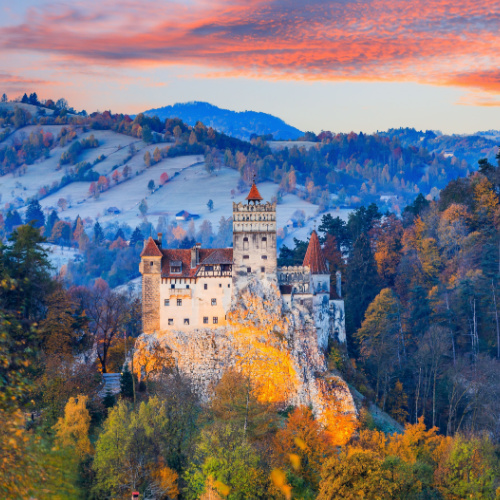
SCStock/Shutterstock
When Is the Best Time to Visit Romania?
The best time to visit Romania is during the shoulder seasons of spring (April to June) and autumn (September to October). During these months, the weather is generally mild and sunny, with fewer crowds and lower prices than during the peak summer season.
Here are some of the benefits of visiting Romania during the shoulder seasons:
- Mild weather: Romania has a temperate continental climate, with warm summers and cold winters. The shoulder seasons offer pleasant temperatures, making them ideal for sightseeing, exploring, and enjoying the outdoors.
- Smaller crowds: The shoulder seasons are less crowded than the peak summer season, so you’ll be able to enjoy Romania’s popular tourist attractions without having to deal with large crowds. This is especially important if you’re visiting popular destinations like Bran Castle, the Painted Monasteries of Bucovina, and the Danube Delta.
- Lower prices: Prices for flights, accommodation, and activities are generally lower during the shoulder seasons than during the peak summer season. This means you can save money on your trip without having to sacrifice quality.
Here are some specific examples of how you can enjoy the most of Romania during the shoulder seasons:
- Spring (April to June): The weather in spring is typically sunny and mild, with occasional showers. This is a great time to visit for exploring the Painted Monasteries of Bucovina, hiking in the Carpathian Mountains, and visiting the city of Cluj-Napoca.
- Autumn (September to October): The weather in autumn is also typically sunny and mild, with occasional showers. This is a great time to visit for seeing the fall foliage in the Transylvanian countryside, visiting Bran Castle, and attending the Bucharest International Film Festival.
While there are many great times to visit Romania, if you’re looking for the best weather and the most opportunities to enjoy the country’s outdoor activities, then we recommend visiting during the shoulder seasons of spring and autumn.
 Average Temperatures by Month
Average Temperatures by Month
|
Jan |
Feb |
Mar |
Apr |
May |
Jun |
Jul |
Aug |
Sep |
Oct |
Nov |
Dec |
| Fahrenheit |
30°
|
36°
|
45°
|
57°
|
67°
|
76°
|
80°
|
79°
|
70°
|
59°
|
45°
|
36°
|
| Celsius |
-1°
|
2°
|
7°
|
14°
|
19°
|
24°
|
27°
|
26°
|
21°
|
15°
|
7°
|
2°
|
Climate in Romania
Summer Season in Romania
Romanian summers are warm and generally sunny, with temperatures often ranging from 25°C to 30°C (77°F to 86°F), though occasional heatwaves can bring higher temperatures. This season is ideal for exploring the country's diverse landscapes, including its mountains, beaches, and historic cities. Summers in Romania are mostly dry, but short-lived thunderstorms can occur, particularly in the mountainous regions.
Rainy Season in Romania
Romania does not have a distinct rainy season, but spring (April to June) and autumn (September to November) are generally the wettest periods. During these months, rainfall is more frequent and can vary from light showers to heavier downpours, contributing to the lushness of the country's natural landscapes and aiding agricultural activities.
Winter Season in Romania
Winters in Romania are cold, with temperatures often dropping below freezing, especially in the mountainous regions. Snowfall is common, creating picturesque winter landscapes and providing opportunities for winter sports in areas like Transylvania and the Carpathian Mountains. In the lowland areas, winters can be milder but still chilly, with occasional snow and frost. Winter is a time for traditional cultural events and indoor activities, offering a different perspective on Romania's natural beauty and cultural heritage.
Our Recommendations
| Destination |
Jan |
Feb |
Mar |
Apr |
May |
Jun |
Jul |
Aug |
Sep |
Oct |
Nov |
Dec |
| Romania |
 |
 |
 |
 |
 |
 |
 |
 |
 |
 |
 |
 |






